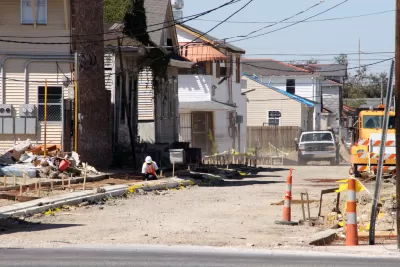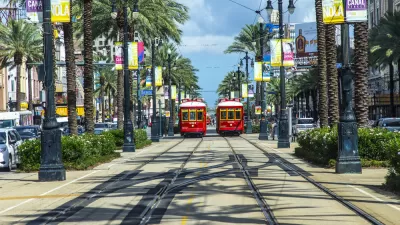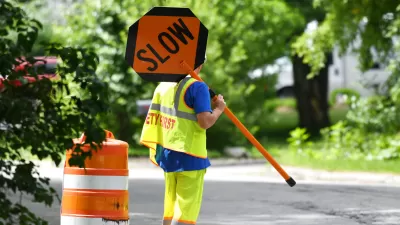An analysis of New Orleans before and after Hurricane Katrina shows that the neighborhoods most damaged were also the most likely to gentrify.

Richard Florida reports on a new paper that looks at the relationship between disaster recovery and gentrification in New Orleans. The researchers determine the probability of neighborhoods gentrifying based on a set of measures from 2000, identify neighborhoods that did gentrify by 2015, and assess the level of damage sustained by neighborhoods from Hurricane Katrina.
"Overall, [Eric Joseph] van Holm and [Christopher] Wyczalkowski conclude that hurricane damage is positively associated with the likelihood of a New Orleans neighborhood having gentrified in the 10 years after Katrina. And they write that gentrification was more likely in neighborhoods that had worse physical damage," writes Florida.
The study also finds that neighborhoods with higher concentrations of African Americans were less likely to gentrify, and Florida notes that these findings are in line with other related research. "The reality is that the recovery from Katrina was terribly unequal, and disasters pave the way for the replacement of the poor by the much more affluent," he says.
FULL STORY: How Natural Disasters Can Spur Gentrification

Planetizen Federal Action Tracker
A weekly monitor of how Trump’s orders and actions are impacting planners and planning in America.

Maui's Vacation Rental Debate Turns Ugly
Verbal attacks, misinformation campaigns and fistfights plague a high-stakes debate to convert thousands of vacation rentals into long-term housing.

Restaurant Patios Were a Pandemic Win — Why Were They so Hard to Keep?
Social distancing requirements and changes in travel patterns prompted cities to pilot new uses for street and sidewalk space. Then it got complicated.

In California Battle of Housing vs. Environment, Housing Just Won
A new state law significantly limits the power of CEQA, an environmental review law that served as a powerful tool for blocking new development.

Boulder Eliminates Parking Minimums Citywide
Officials estimate the cost of building a single underground parking space at up to $100,000.

Orange County, Florida Adopts Largest US “Sprawl Repair” Code
The ‘Orange Code’ seeks to rectify decades of sprawl-inducing, car-oriented development.
Urban Design for Planners 1: Software Tools
This six-course series explores essential urban design concepts using open source software and equips planners with the tools they need to participate fully in the urban design process.
Planning for Universal Design
Learn the tools for implementing Universal Design in planning regulations.
Heyer Gruel & Associates PA
JM Goldson LLC
Custer County Colorado
City of Camden Redevelopment Agency
City of Astoria
Transportation Research & Education Center (TREC) at Portland State University
Jefferson Parish Government
Camden Redevelopment Agency
City of Claremont





























